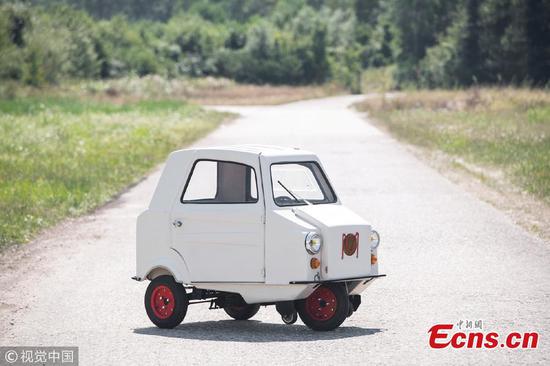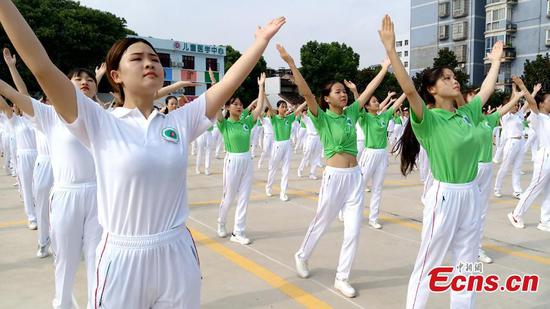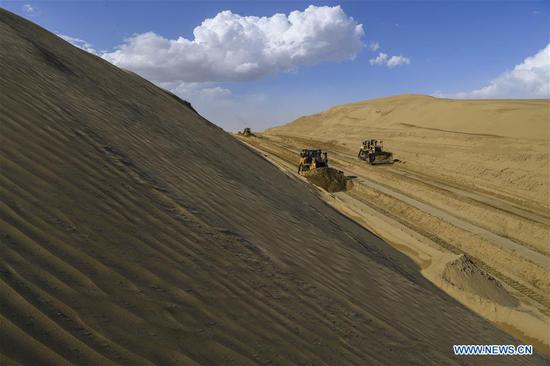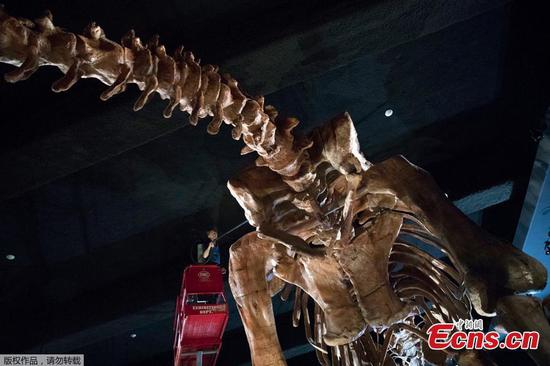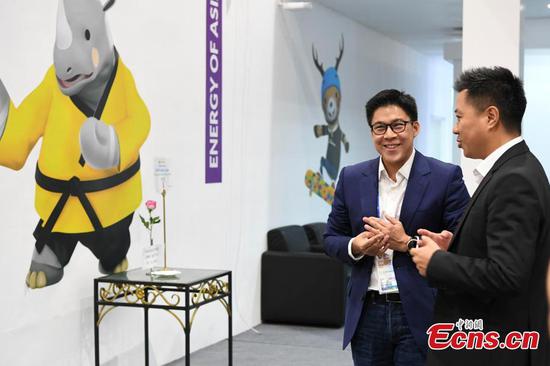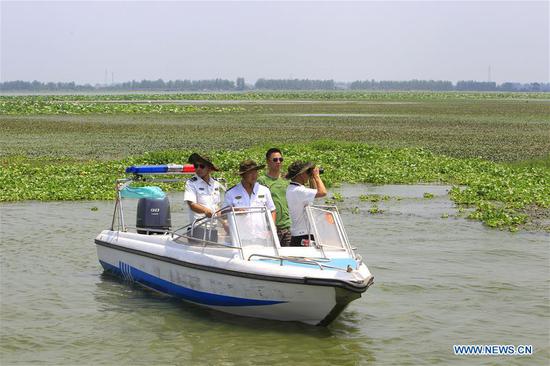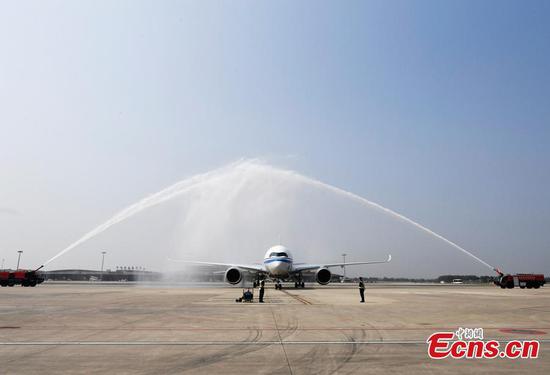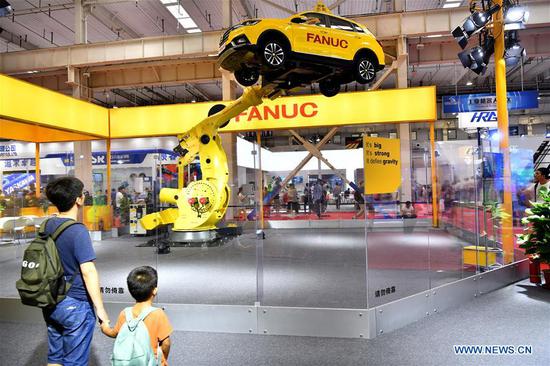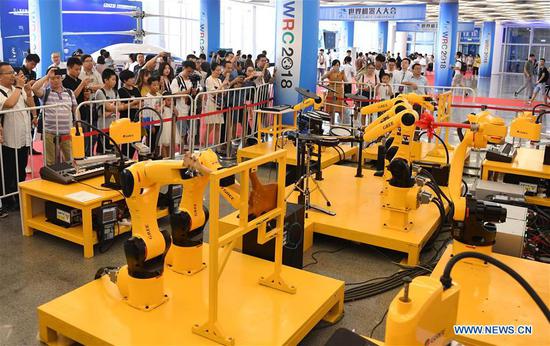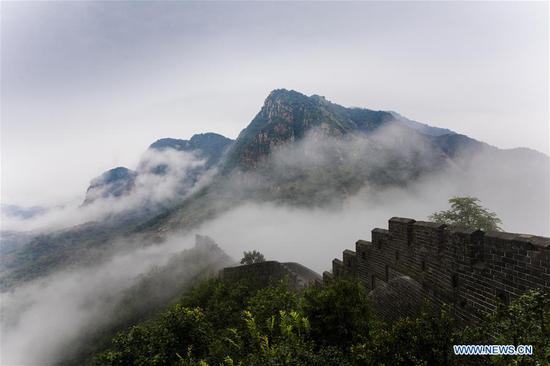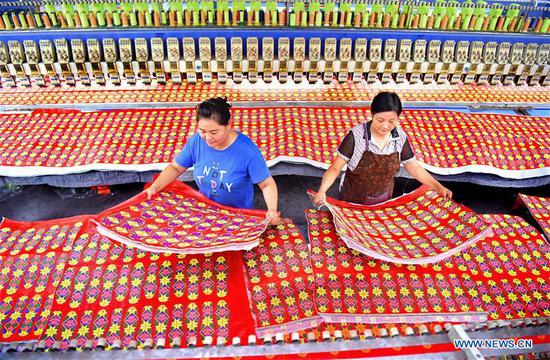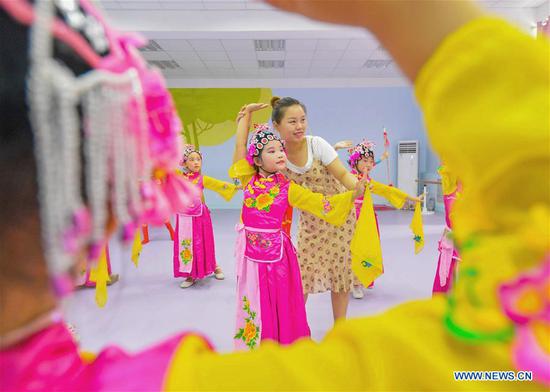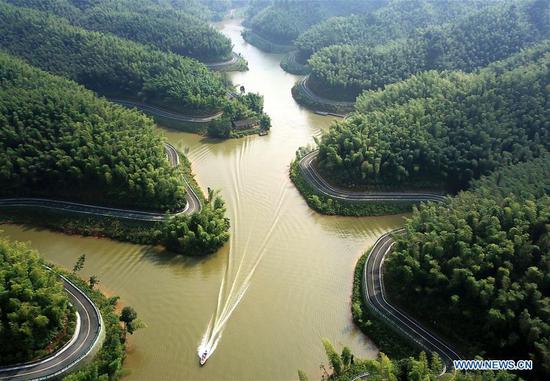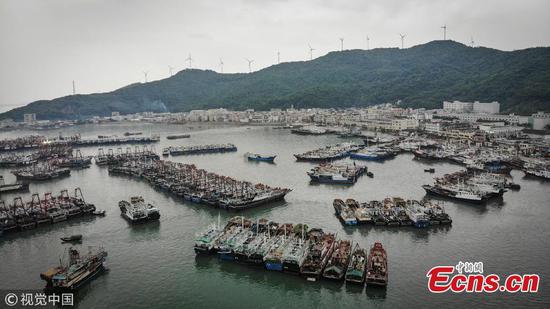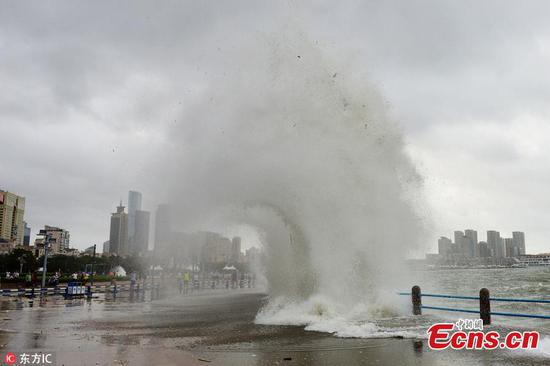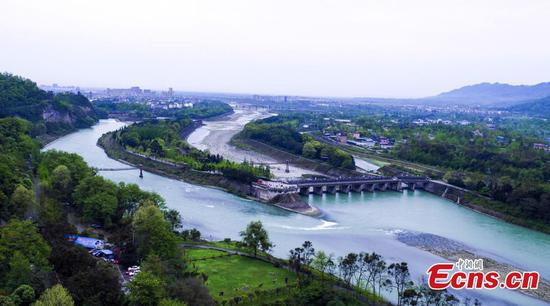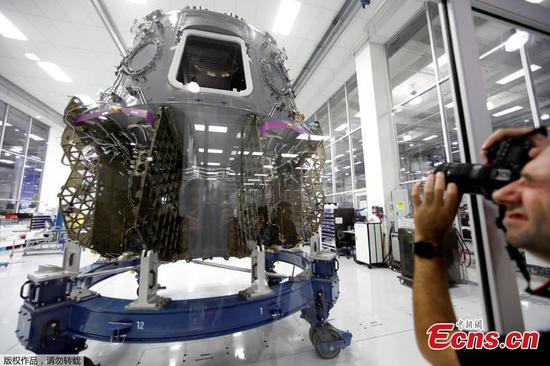Nanjing, the capital of Jiangsu Province, is striving to upgrade its manufacturing and strengthen its position as a logistics hub in the lower Yangtze River.
On its northern bank in the city, a research and development park is taking shape.
Around 1,800 companies have registered in the Nanjing Jiangbei New Area Industrial Technology Research and Innovation Park, since its opening two years ago.
Miao Tianbao, deputy director of the park, said the country's leading companies in high-end manufacturing and the IT sector, including integrated circuit-maker Tsinghua Unisoc, internet company incubator Alibaba Innovation Center, have settled down in the park, which has a planned area of 14.9 square kilometers.
"Since 2016, our business department has received a dozen inquiries and visits from companies every day," Miao said, adding that what draws them to the park is a slew of favorable policies from the province in areas such as talent recruitment and funding.
"Our infrastructure, such as the common cafeteria and office building, is also first-rate. On transportation, two subway lines under construction will have nine stations in the area," he said.
International cooperation is also taking place in the park. Sino-German Intelligent Manufacturing Research Institute, which was co-founded by Nanjing Yangzi Investment Group, industrial investment funds and private capital, is cooperating with German Fraunhofer-Gesellschaft applied scientific research institution to introduce intelligent manufacturing technology and advanced management experience.
Michael Obenaus, a German coordinator at the institute, said his team is working on identifying the experts and technologies in Germany that are needed in China.
"China wants to make a huge step forward from the mass production level to being one of the leading countries in the field of manufacturing. It has a special focus on innovation and quality, which is what Germany can offer," Obenaus said.
"We will open three centers here, and draw researchers from both German and Chinese institutes to work together on industrial projects," he said, adding that he is working on a project to make a mushroom harvesting machine based on a robotic grabber with pressure and visual detection technology from Germany.
"In Germany, it is used to harvest cucumbers, and we want to improve it for mushrooms as there is great demand. Compared with cucumbers, it is more challenging to design the mushroom harvest machine - a mushroom is not easy to see, and it's soft and tender to grab."
Across the Yangtze River, on the southern bank in the city, a shipping logistics service center of 35,000 square meters opened in April.
In the past four months, 33 logistics companies and related government agencies, including the maritime safety administration, customs and the hydrographic bureau, have settled in the center's office building.
Tao Zhi, head of the business department of the center, said Nanjing has advantages in developing the shipping industry, as it has a deep watercourse to accommodate ships with more than 10,000 metric tons displacement.
"With the building of this center, we hope to improve the communication efficiency between companies and government agencies," Tao said.
The second phase of the project - another office building for shipping and port operating companies - will be finished by the end of this year, she added.
Liu Baokui, deputy director of the Institute of Spatial Planning and Regional Economy, said the development of both Nanjing's Jiangbei R&D park and shipping center will enhance the collective effect that is vital to the manufacturing and shipping industries.
"A good platform and public service will help reduce companies' costs and spark market opportunities for the industry," he said.
In the master plan of the Yangtze River Economic Belt issued in 2016, Nanjing is listed among five centers to be built along the river, together with Wuhan, Hubei province; Zhoushan, Zhejiang province; Chongqing; and Shanghai.









